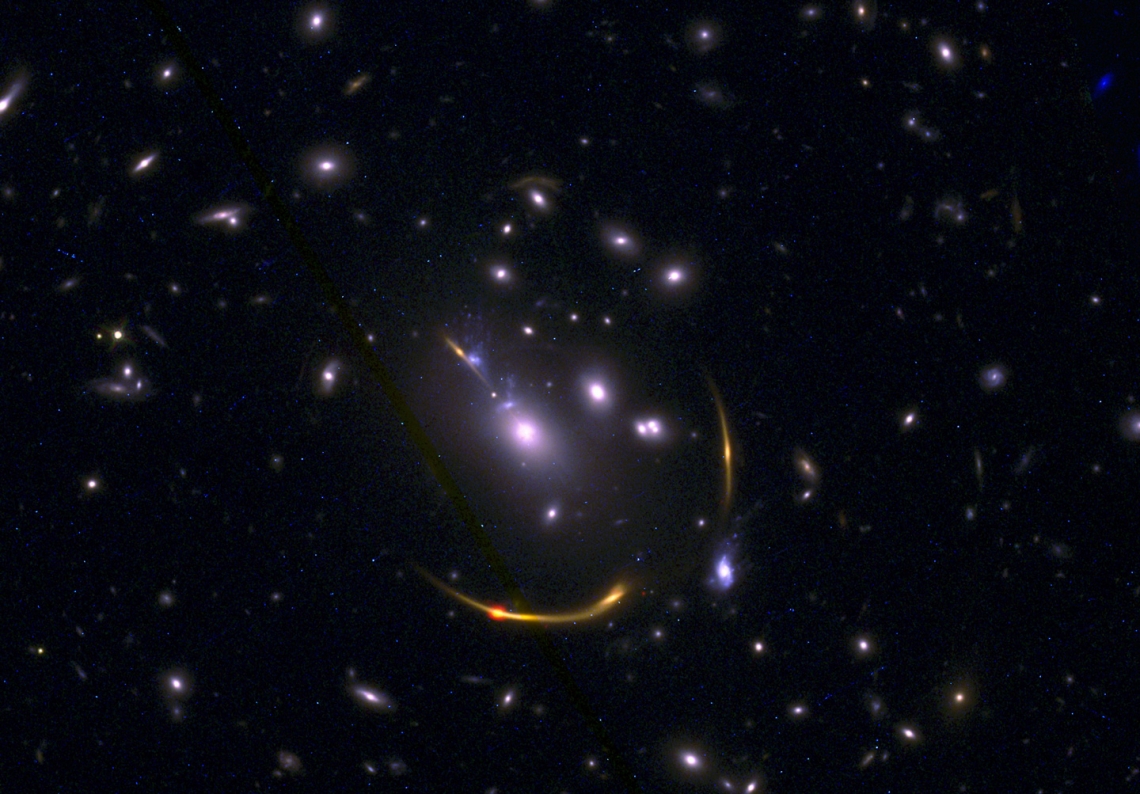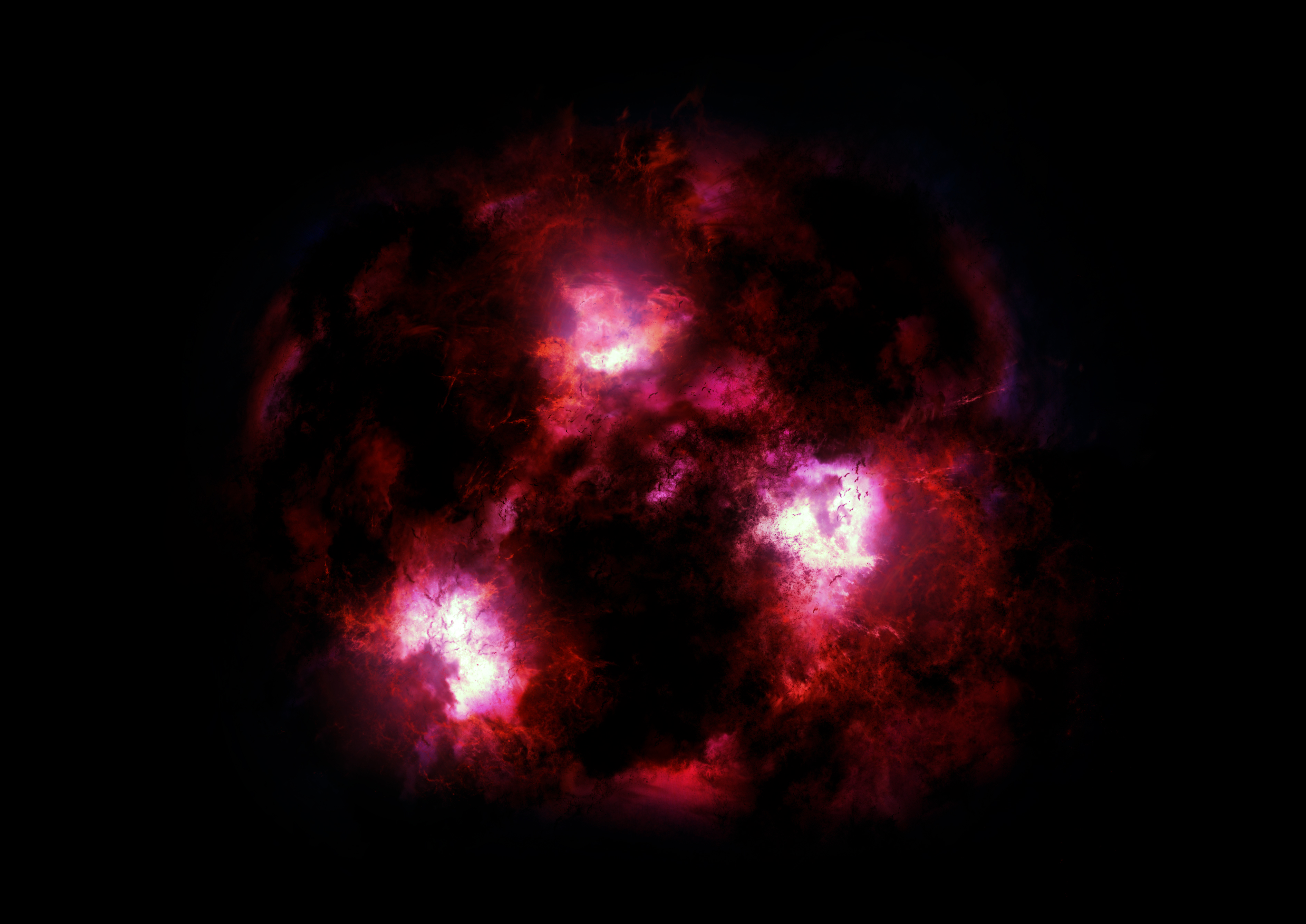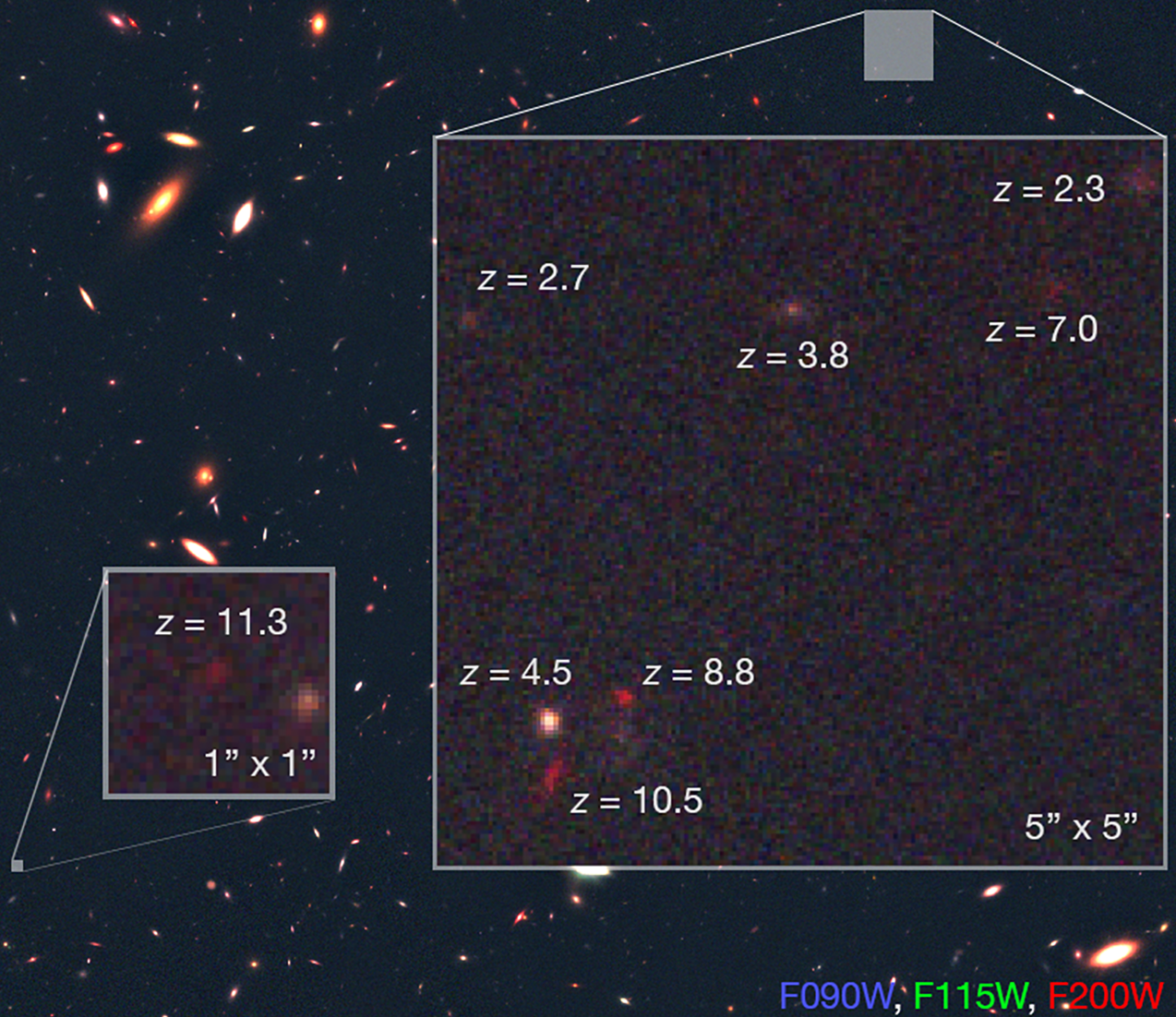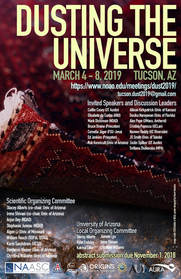In the press

Read the recent press release about the NIRCam and MIRI Instrument/Science teams, including my work on NIRCam, at University of Arizona. University of Arizona will be a hub of JWST expertise and exciting science: "13% of the total observing time awarded to two UArizona instrument teams and other UArizona astronomers. This gives the university more viewing time than any other astronomy center in the world." This includes large legacy JWST programs that will enable a ton of science for the whole community, including more than 150 hours of JWST time allocated to the large pure parallel program I am leading called the PANORAMIC Survey. Image credit: NASA
Hear my interview with Joe Palca on NPR's All Things Considered on Dec 27, 2021, and with Tony Perkins on Arizona Public Media

Published in Nature (Whitaker, Williams et al. 2021): the REQUIEM team used the Atacama Large Millimeter Array (ALMA) to discover that "dead" galaxies (those that recently stopped forming new stars) ran out of cold gas, the fuel for new star formation, despite the abundance of cold gas in the early Universe.
Image credit:ALMA (ESO/NAOJ/NRAO)/S. Dagnello (NRAO), STScI, K. Whitaker et al.
You can read the press releases from NASA / Space Telescope Science Institute , ALMA , and University of Arizona . I was also interviewed about our discovery by The Show, which aired on NPR in Phoenix (KJZZ) on Oct 13, 2021.

Using ALMA my team and I serendipitously discovered a galaxy that is so obscured by dust, it is invisible at other wavelengths. We found it by accident in a small survey, which probably means these invisible galaxies are common, and still undiscovered in the early Universe. We likened it to a "cosmic yeti" to help communicate that we caught a glimpse of galaxy population that was rumored to be out there at z > 4 but has so far eluded detection. When James Webb Space Telescope launches, we can find them all! In the meantime they are evidence that massive galaxies grow rapidly in the early Universe.
Image credit: James Josephides (Swinburne Astronomy Productions), Christina Williams (Arizona), Ivo Labbe (Swinburne). See also an animation illustrating what the galaxy might look like over millions of years when its stars die in supernovae.
You can read the press releases from University of Arizona and my PhD institute UMass-Amherst. Our result sparked additional stories in CNN , Forbes , Discover , Newsweek, Smithsonian, and Boston Globe , and interviews on NBC and CBS in Boston, ABC/FOX Western Massachusetts News , KGUN in Tucson and Phoenix Public Radio . And a podcast from WRSI in Western Mass
Using Hubble Space Telescope, Dr. Bettina Posselt and collaborators discovered extended infrared emission coming from a pulsar. This unprecedented observation could mean there is a large dusty disk surrounding the pulsar that re-collapsed after the supernova of its progenitor star. It could alternatively be evidence of a "pulsar wind nebula" which is caused by a wind of charged particles emanating from the pulsar and interacting with the interstellar medium, however pulsar wind nebulae have never before been seen in the infrared, indicating new physics we can learn. Linking the mysterious infrared emission to the pulsar required very careful rejection of other possible hypotheses, such as a background high-redshift galaxy along the line of sight to the pulsar.
You can read the press releases from Penn State University and the NASA press office.
Using the CANDELS survey with Hubble Space Telescope, my colleages and I, lead by Dr. Bomee Lee at Caltech, made the remarkable discovery that even 11 billion years ago, so soon after galaxies started forming, the diversity of morphologies in galaxies already exists (known as the Hubble Sequence in the nearby Universe).
You can read the press releases from Space.com and the European Space Agency press office.
Things you can download

The launch of JWST might be delayed until 2021, but that shouldn't stop you from exploring what real JWST data will look like! At this link you can find simulated JWST images that incorporate real engineering data from the real NIRCam detectors, and simulate the ultra-deep extragalactic field (GOODS-South) that we will see in Cycle 1. JAGUAR simulated images and catalogs of JWST extragalactic surveys
Figure: Williams et al. 2018Dusting the Universe

I'm on the SOC for the conference titled Dusting the Universe,
March 4-9, 2019
Tucson, AZ at the University of Arizona.
Abstract deadline is Nov 1, 2018.
More information on this meeting at:
https://www.noao.edu/meetings/dust2019/